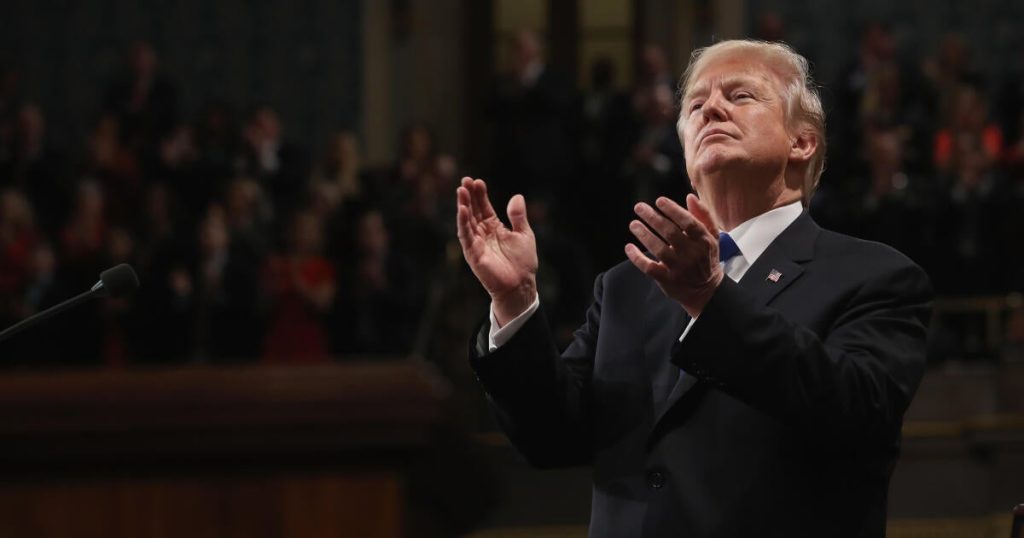Washington — President Donald Trump is set to address a joint session of Congress this evening, marking his first address to both chambers since returning to office just six weeks ago. Traditionally, this initial speech serves as a platform for the president to delineate key policy goals and future visions. The House Speaker Mike Johnson extended the invitation, urging Trump to share his “America First vision” for the nation’s future during a pivotal time for American governance.
| Article Subheadings |
|---|
| 1) The Timing of Trump’s Address |
| 2) Where and How to Watch the Address |
| 3) Context Surrounding Trump’s Return to Office |
| 4) Legislative Efforts in Support of the Trump Agenda |
| 5) Implications of Trump’s Foreign Policy Directions |
The Timing of Trump’s Address
President Trump’s address is scheduled to commence at 9 p.m. Eastern Time. Historical precedent indicates that speeches of this nature can extend to approximately one hour. During his first term, his 2017 joint address to Congress ran close to this time frame. Following that speech, the average duration of his State of the Union addresses clocked in at about 80 minutes, according to records from the American Presidency Project. The significance of this timing is underscored by Trump’s recent return to office; he will leverage this opportunity to emphasize key parts of his administration’s agenda.
Where and How to Watch the Address
For those wishing to view the address, CBS News will provide live coverage of the event, beginning at 9 p.m. ET. Local CBS affiliates will also air the speech, ensuring broad accessibility to the public. As an alternative, the address can be streamed online via CBS News’ 24/7 coverage available on CBSNews.com, the CBS News app, and the streaming service Paramount+. Such arrangements cater to a diverse audience, facilitating access without direct cable subscriptions.
Context Surrounding Trump’s Return to Office
President Trump’s return to the White House follows a period of significant political turmoil and public sentiment that has been notably mixed. The recent CBS News polling illustrates that while a majority of Americans recognize ongoing changes in governance under Trump, opinions diverge sharply on the effectiveness and desirability of these changes. Notably, Trump has initiated substantial alterations within federal bureaucracies, collaborating with tech mogul Elon Musk to spearhead a ‘Department of Government Efficiency’ (DOGE) aimed at streamlining government operations. This includes a proposed reduction of the federal workforce and meticulous curtailment of unnecessary spending.
As Trump prepares for the address, it has been reported that several Democrats plan to invite former government employees affected by recent cuts as guests to highlight the human impact of the DOGE initiatives. The president’s controversial immigration policies underline pressures within his administration as he pushes for enhanced border control. Observers note that while illegal border crossings decreased in January, there has been notable resistance and operational difficulties within the Immigration and Customs Enforcement (ICE) agency.
Legislative Efforts in Support of the Trump Agenda
Amidst the backdrop of Trump’s policies, Congressional Republicans are mobilizing to align legislative efforts with the president’s priorities. The House recently passed a budget resolution designed to facilitate the advancement of Trump’s initiatives related to border security and defense, alongside maintaining the advantageous tax cuts originally implemented in 2017. Although this resolution provides a framework for future action, its reception in the Senate remains precarious, as differing views among lawmakers could impede progress.
Implications of Trump’s Foreign Policy Directions
Internationally, Trump’s policies have profound ramifications, evidenced by recent developments in U.S.-Ukraine relations. A scheduled meeting with Ukrainian president Volodymyr Zelenskyy did not go as planned, leading to heightened tensions, particularly after Trump openly criticized Zelenskyy while appearing to dismiss the complex realities of the ongoing war initiated by Russia. This contentious exchange culminated in Zelenskyy leaving the White House meeting without securing critical military support, which could have significant implications for Ukraine’s ability to combat external aggression. As Trump pauses military aid efforts, the ramifications on the global stage will likely reverberate for months to come.
| No. | Key Points |
|---|---|
| 1 | President Trump will address Congress tonight at 9 p.m. ET. |
| 2 | CBS News will provide live coverage, also available for streaming. |
| 3 | Recent polling shows divided public opinion on Trump’s governance changes. |
| 4 | Congressional Republicans are working to pass a budget resolution in line with Trump’s agenda. |
| 5 | Foreign policy, particularly with Ukraine, is under scrutiny following a fraught meeting. |
Summary
President Trump’s upcoming address to a joint session of Congress serves as a crucial platform for outlining his administration’s policy goals at a pivotal moment in U.S. governance. With the backdrop of recent actions aimed at restructuring government operations and changing international relations, Trump’s speech is anticipated to resonate across political spectrums. As constituents and leaders alike await his remarks, the conversation surrounding his presidency continues to evolve, navigating both domestic challenges and international dynamics.
Frequently Asked Questions
Question: What is the significance of a joint session address?
A joint session address allows the president to present a vision and priorities to both chambers of Congress, facilitating engagement with lawmakers on upcoming policies.
Question: Why do some lawmakers invite guests to the speech?
Lawmakers often invite guests to symbolize the impact of policies, especially to highlight personal stories related to governmental changes or initiatives, providing emotional depth to political discussions.
Question: How has public opinion shaped the legislative landscape?
Public opinion plays a crucial role in guiding legislative priorities, often influencing the direction of bills and resolutions as lawmakers seek to align with constituents’ expectations and perceptions.


